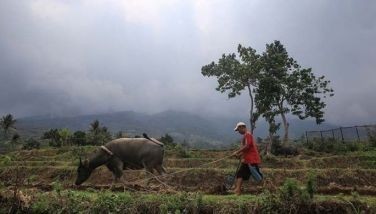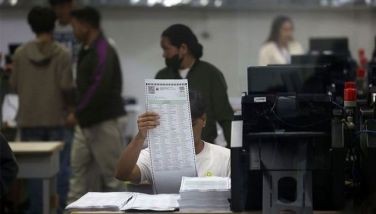#Journeyto30 Hostage drama
MANILA, Philippines – She had been in the country for only a month to preach God’s word, but she met an untimely death at the hands of those she ministered to.
This was the story of 36-year-old Australian missionary Jacqueline Hamill, who was raped by the hostage takers and was killed in the crossfire between them and authorities on Aug. 15, 1989.
The STAR’s front page on Aug. 16, 1989 captured that event now famously known as the Davao Hostage Crisis.
Her story came to the fore this week after Davao City mayor and presidential candidate Rodrigo Duterte made a remark about her rape in a campaign sortie in Quezon City.
The death of Hamill as well as four other hostages (including a nine-year-old boy) was sensational news during the year because of the way the authorities handled the situation.
Unknown to many, the August 1989 hostage taking wasn’t the first hostage-taking incident that year. The same perpetrators led by Felipe Pugoy and Mohammad Nasser Samparini had taken hostage 14 prison employees at the Davao Penal Colony in Panabo City, Davao del Norte on April 2 that year. The hostage takers were jailed in the colony due to various offenses.
Armed with knives, the prisoners overpowered their guards and commandeered a jeepney to escape from the prison compound, together with their hostages. The Philippine Constabulary was quickly dispatched to intercept the hostage takers, who were blocked about 120 kilometers from the prison.
Negotiations were held with the hostage takers, with the help of then House Speaker Ramon Mitra and then senator Santanina Rasul. The hostage takers demanded a plane to go to Manila to speak to President Corazon Aquino and transfer from the Davao Penal Colony to the National Penitentiary in Muntinlupa City, citing mistreatment by prison officials.
Government negotiators convinced the hostage takers to drive to Davao City and continue negotiations there.
The hostage drama was resolved hours later after 13 of the hostages agreed to surrender themselves and their hostages. Only two prisoners – Pugoy and a certain Ricardo Navarro – remained at large with their hostages but were eventually captured. All prisoners were sent to the Davao Metrodiscom prison where they awaited trial on kidnapping charges.
With their demand for relocation rejected, the prisoners hatched another daring, albeit more complex, hostage taking and escape.
The prisoners took advantage of the visit on Aug. 13 of missionaries from the Joyful Assemblies of God, a Protestant group. Among them was Hamill, who was in the country without sanction from her church in Australia to minister to the prisoners.
Soldiers and police surrounded the Metrodiscom compound. Snipers positioned themselves on the roofs of nearby houses and buildings.
Civilian negotiators led by Davao Rep. Jesus Dureza, Justice Undersecretary Silvestre Bello III, AFP Southern Mindanao Regional Commander Brig. Gen. Mariano Baccay, Davao del Sur governor Douglas Cagas and Mayor Duterte talked to the hostage takers, who demanded their transfer to Manila by 3 p.m. the following day.
The deadline lapsed without the demands being met. The negotiators asked for an extension, which the hostage takers granted. They also asked negotiators for a bus that would take them to Manila. At this point, all of the female hostages, including Hamill, had already been raped by the hostage takers.
The following day, Aug. 15, at around 10:35 a.m. the hostage takers decided to leave the prison compound using their hostages as human shields. The prisoners fired shots and the authorities responded, resulting in an initial gunfight.
Among the dead was Hamill, whose body lay on the door of the prison fence for hours before it was retrieved by the authorities.
The remaining hostage takers retreated back to the prison compound and were killed hours later in a second assault by a combined police and military team. Newspapers at that time reported that the hostage takers were shot even while in the throes of death.
The Senate investigated potential blunders in the handling of the incident. Among the acts that the inquiry found deplorable were the lack of training and preparedness of civilian negotiators in handling the incident, as well as the shoot-to-kill order given to the assault team. Nevertheless, the negotiating team, as well as the assault and rescue teams that responded to the incident, were cleared by the investigation, despite the death of the 36-year-old Australian and four other hostages.
The 1989 Davao Hostage Crisis revealed how authorities at that time were largely unprepared to respond to such a crisis. It failed to save the lives of the hostages, just as it had failed to save Brig. Gen. Eduardo Batalla and Col. Romeo Abendan in a botched air strike during the Camp Cawa-Cawa hostage crisis in January of the same year.
And even today, our authorities remain clueless on how to properly respond to hostage-taking incidents, such as the 2010 Luneta hostage crisis.
- Latest
- Trending
































